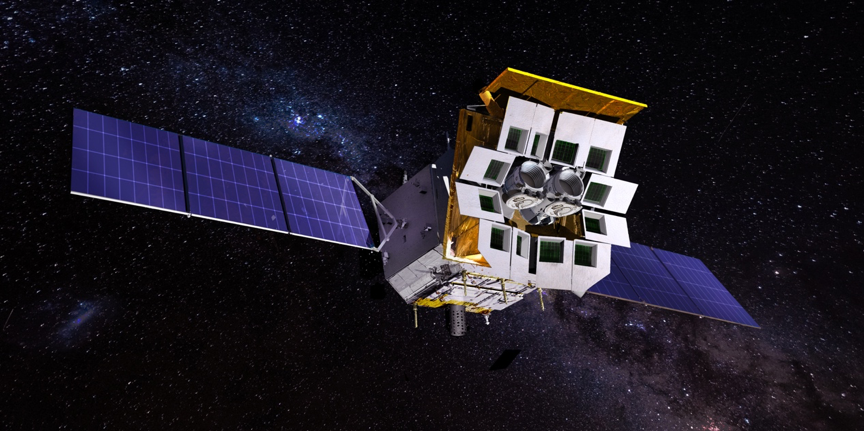
HELSINKI — The Chinese Academy of Sciences is aiming to accelerate its progress in space science with a newly developed medium- and long-term roadmap for future missions.
The plan will see China’s space science efforts—marked in recent years by successful dark matter, quantum and space physics missions—transitioning into an accelerated development phase. The long-term plan aims to solidify the country’s role in global space science.
The development is outlined in a paper recently published in the Chinese Journal of Space Sciences, authored by Wang Chi, director of the National Space Sciences Center (NSSC) under the Chinese Academy of Sciences (CAS). It states that CAS instructed the Chinese space science community to create a national medium and long-term plan for space science. The release of the plan is stated to be imminent.
As part of the plan, five main scientific themes have been identified for future breakthroughs. These are the extreme universe, space-time ripples, the panoramic view of the Sun and Earth, habitable planets, and biological and physical space science.
These are summarized as “One Black, Two Dark, Three Origins and Five Characterizations.” These refer respectively to the study of dense celestial bodies such as black holes, the study of dark matter and dark energy, the origin of the universe, the solar system and life, and characterizing the near-Earth system, Earth-moon system, the solar system, and the extra-solar system, and the laws governing matter and life in the space environment.
| Theme | Description |
|---|---|
| Extreme Universe | Exploring the universe’s origin and extreme physical conditions. |
| Space-Time Ripples | Detecting gravitational waves and understanding gravity and space-time. |
| Panoramic View of the Sun and Earth | Studying the interaction between the Sun, Earth, and solar system. |
| Habitable Planets | Exploring solar system planets, exoplanets, and the potential for life. |
| Biological & Physical Science in Space | Studying matter movement and life under space conditions, and advancing quantum mechanics and general relativity. |
Space science missions before 2030
Five missions already in development are highlighted to deliver major discoveries by 2030 as part of the vision. These are DSL, eXTP, SPO, Taiji-2 and Earth 2.0. These gained approval earlier this year.
The Enhanced X-ray Timing and Polarimetry (eXTP) mission is an X-ray observatory to monitor the sky and enable multi-messenger studies for gravitational waves and neutrino sources.
Discovering the Sky at the Longest Wavelength (DSL) will be a combination of 10 spacecraft in lunar orbit. These will use the moon as a shield against Earthly electromagnetic interference. In this radio quiet environment, the spacecraft will listen for faint, ultra-long wave signals from the early universe.
The Earth 2.0 (ET) observatory, scheduled to launch in 2028, will look for habitable planets from Sun-Earth Lagrange point 2. The Solar Polar-orbit Observatory (SPO) aims to study poles of the Sun. It will orbit at an inclination of greater than 80 degrees with respect to the plane of the ecliptic.
Finally Taiji-2, a three-satellite constellation in a 60-million-kilometer heliocentric orbit, will detect millihertz gravitational waves.
The paper notes that future missions, such as the Chang’e-7 lunar south polar landing mission, the 2025 Tianwen-2 near-Earth asteroid sample return and main-belt comet exploration mission, the International Lunar Research Station (ILRS), and space science conducted aboard the Tiangong Space Station will contribute to the overall vision.
The five missions were selected from CAS’s earlier Strategic Priority Program (SPP) on Space Science. Missions launched under SPP include the DAMPE dark matter probe, the QUESS quantum science satellite, the Advanced space-based Solar Observatory (ASO-S) and the Einstein Probe, launched in January.
The SPP is now set to be replaced by the national medium and long-term plan for space science. Notably, none of the missions proposed for the SPP under planetary and Earth science appear to have gained approval. These proposals included an E-type asteroid sample return and a Venus orbiter. Chinese scientists have called for a strategic focus on asteroids and sample return missions.
International collaboration will also play a part in China’s space science plans. This builds on extensive cooperation in the Einstein Probe and upcoming SMILE mission with ESA. “In the future, China will actively initiate, propose and participate in international cooperation projects,” the paper reads.
“Space science in China is advancing from the initial stage into a new era of accelerated development,” the paper states. “The release of the first national medium and long-term plan for space science is imminent, and a series of new space science satellite missions are about to be approved for implementation.”
| Mission | Description | Objective |
|---|---|---|
| DSL (Discovering the Sky at the Longest Wavelength) | A fleet of 10 spacecraft in lunar orbit using the Moon as a shield against Earth’s electromagnetic interference. | To detect ultra-long wave signals from the early universe, providing insights into the universe’s “dark age.” |
| eXTP (Enhanced X-ray Timing and Polarimetry) | An X-ray observatory designed for high-resolution timing and polarimetry observations. | To study dense celestial bodies like black holes and neutron stars, and to enhance multi-messenger astronomy. |
| SPO (Solar Polar-orbit Observatory) | A spacecraft orbiting at a high inclination to observe the Sun’s poles. | To study the Sun’s magnetic activity and the origin of high-speed solar winds. |
| Earth 2.0 (ET) | A space observatory positioned at the Earth-Sun Lagrange point 2 (L2). | To conduct long-term surveys for Earth-like habitable exoplanets. |
| Taiji-2 | A three-satellite constellation in heliocentric orbit with a 3-million-kilometer baseline. | To detect millihertz gravitational waves, advancing the study of space-time and gravity. |
